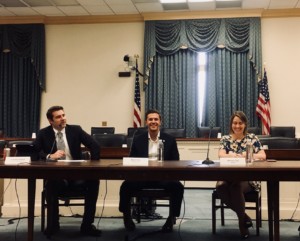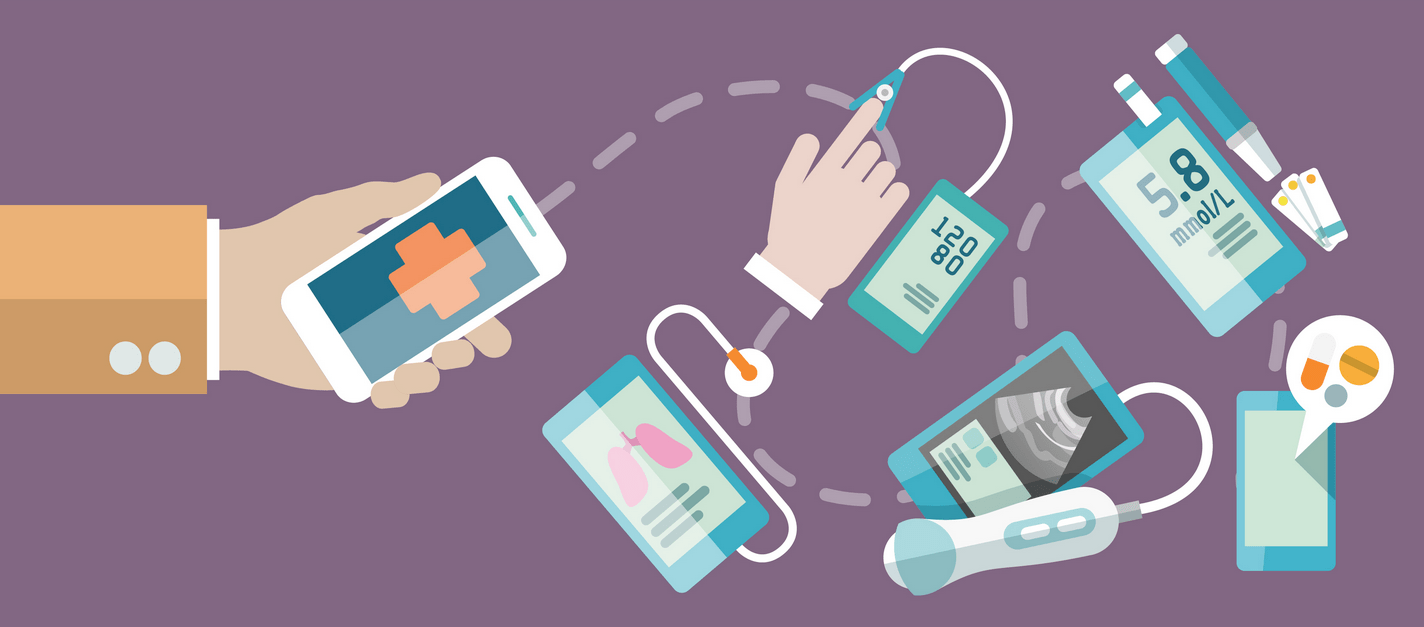By Madeline Zick
Now, more than ever, we rely on our phones and mobile devices to engage in the digital and physical world. These mobile technologies have enhanced our fitness and wellness routines, and they have begun to revolutionize how we manage our health and interact with our doctors as well. Remote patient monitoring and telehealth technologies are just two types of innovations we see driving massive change in healthcare. As the number and prevalence of these innovations grow, they will increasingly depend on the deployment of 5G.
 Earlier this week, ACT | The App Association’s Connected Health Initiative (CHI) hosted a lunch briefing with the 5G Caucus titled “5G: Not Just the ‘Next G’ for Connected Health.” The briefing was moderated by the App Association’s Senior Director for Public Policy Graham Dufault and featured insights from panelists Mark Liber, academy manager at StartUp Health – a CHI steering committee member – and Melissa Tye, vice president of public policy at Verizon. The panelists engaged congressional staffers and policymakers in a more than 90-minute discussion on the implications of 5G for the health sector.
Earlier this week, ACT | The App Association’s Connected Health Initiative (CHI) hosted a lunch briefing with the 5G Caucus titled “5G: Not Just the ‘Next G’ for Connected Health.” The briefing was moderated by the App Association’s Senior Director for Public Policy Graham Dufault and featured insights from panelists Mark Liber, academy manager at StartUp Health – a CHI steering committee member – and Melissa Tye, vice president of public policy at Verizon. The panelists engaged congressional staffers and policymakers in a more than 90-minute discussion on the implications of 5G for the health sector.
StartUp Health is a New York-based tech incubator that supports and invests in a global army of health transformers. The group fosters an array of innovative startups and tech companies that address a variety of healthcare concerns, but each depends on a strong internet connection to deliver their services. Mark described several innovative companies with products that serve health and emergency response needs but depend on internet connectivity to deliver treatment and share patient data from their homes. For example, Promena VR allows behavioral health practitioners to leverage virtual reality (VR) as a treatment method for patients who suffer from anxiety and stress disorders. By using VR, practitioners can help patients overcome phobias and anxiety disorders by simulating real-world situations. Another company, CarePredict, brings senior care to a new level by using small sensors and wearable devices to offer caretakers insights on senior patients’ health. Specifically, CarePredict’s artificial intelligence software can analyze the data collected from wearable devices to forecast ailments like urinary tract infections based on the number of visits to the bathroom.
Mark also introduced two StartUp Health portfolio companies currently revolutionizing emergency response activities that could expand their reach with stronger networks supported by 5G. The Cloud 911 platform helps first responders address people in mental health crises by enabling law enforcement to use live video to virtually “bring” a psychiatrist to the scene to help a person with mental illness, or contact and coordinate transport for a person to outpatient care or a psychiatric hospital. Mental health crises may happen anywhere, and emergency response teams don’t get to choose the scene of an episode – this technology enables them to help the people who need it most but depend on strong connectivity to support their live video functions. The 5G networks offer a big step forward to support these solutions. Similarly, Beyond Lucid Technologies and Consulting offers a service that alerts hospitals to how many people are in involved in a car crash or other life-threatening emergency, so that doctors and hospital personnel know what to expect when the emergency vehicles arrive. For many first responders, it’s an uphill battle to accurately communicate all the relevant patient information to emergency room physicians. While they both play a role in helping people affected by emergency situations, first responders’ primary job is to save the lives or secure the safety of those involved in an accident, and handing off vital information to hospitals in high-stress situations can be difficult. The availability of 5G would help ensure that first responders can use this technology to share accident data with hospitals in real time to help protect and save people’s lives.
In response to the healthcare examples that could benefit from 5G deployment, Melissa emphasized the importance of 5G’s low latency as a critical feature for some of the most promising healthcare applications. Latency refers to the time it takes for information to travel through the network to arrive at its destination. For several applications, especially those like VR, low latency is crucial. In most normal settings, humans can tolerate slight visual and audio delays, but they are often more sensitive about their sense of touch not aligning with other senses. To illustrate this point, Melissa described how many physical therapy patients now use a VR application to gauge reflexes and reaction times. She noted that for VR to be successful, every millisecond matters. Therefore, 5G’s low latency—1 millisecond delivery time versus the 300 milliseconds it takes to blink an eye—is crucial to their success. She, like many others, looks forward to Verizon’s continued rollout of 5G networks in cities like Los Angeles and Sacramento to ensure the most innovative and effective healthcare solutions are possible anywhere the network reaches.
Fortunately, policymakers are hard at work to streamline the deployment of 5G networks across the country. In addition to the efforts by the 5G Caucus, led by Representatives Susan Brooks and Debbie Dingell, the Federal Communications Commission (FCC) recently issued a rule to streamline siting processes for 5G infrastructure. For regulators, the benefits of 5G deployment are far greater than faster Netflix downloads and or seamless FaceTime connections—it’s about enabling life-saving connected health tools and solutions to help communities in need.
Next week, FCC Commissioner Brendan Carr will visit another CHI steering committee member, the University of Virginia Health System, to witness how the health system currently uses connected health technologies, and how they could unlock greater potential with 5G deployments.
5G and its benefits for health aren’t just on the way—they are happening now. The App Association and our members are more than ready to drive these innovative new solutions to reach more people and enhance health care quality in all corners of the country.
